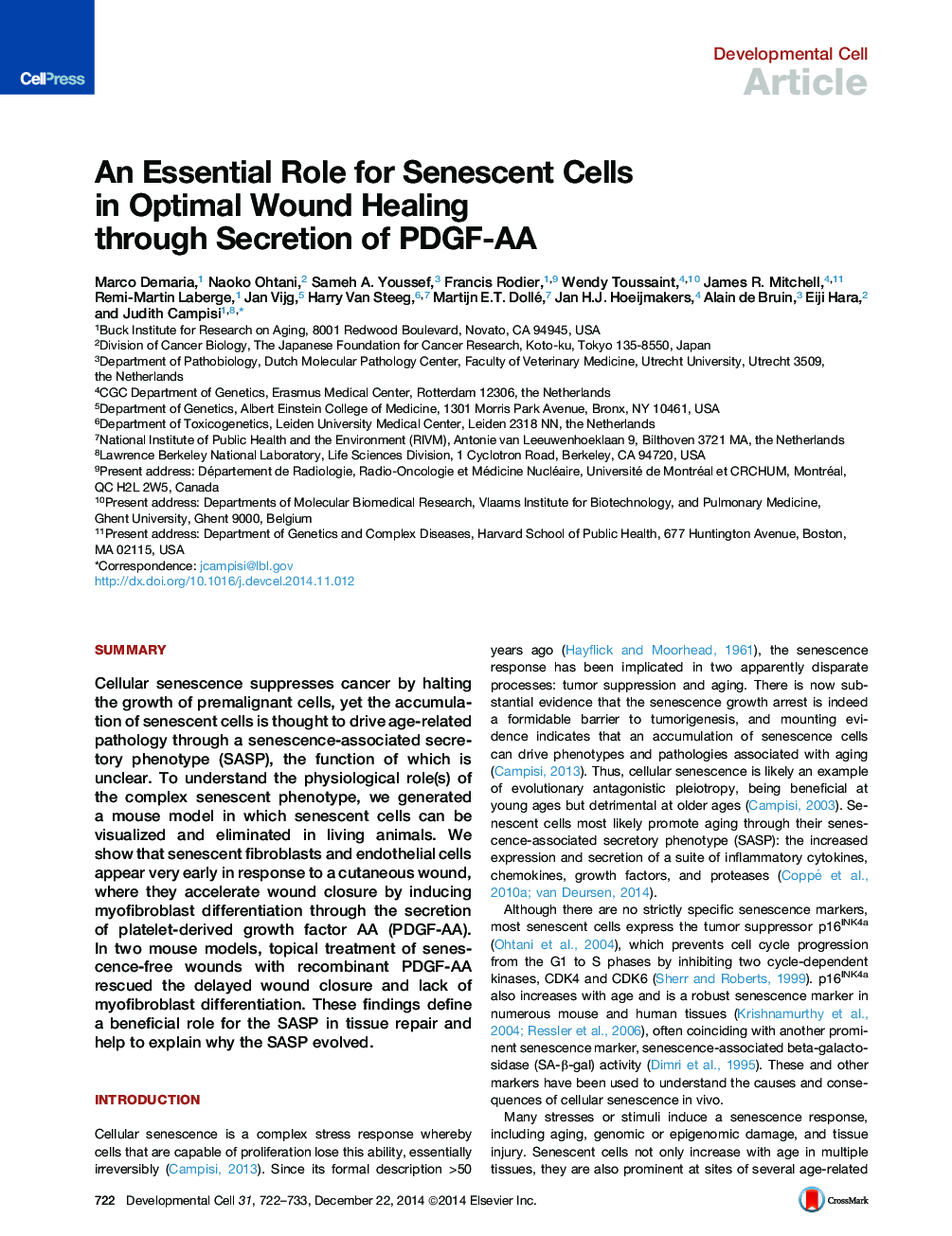| Article ID | Journal | Published Year | Pages | File Type |
|---|---|---|---|---|
| 2176574 | Developmental Cell | 2014 | 12 Pages |
•p16-3MR transgenic mice are a model to study the role of senescence in vivo•Endothelial and mesenchymal cells undergo senescence during skin wound healing•Depletion of senescent cells impairs the kinetics of wound closure•PDGF-AA is a senescence-associated factor essential for optimal wound healing
SummaryCellular senescence suppresses cancer by halting the growth of premalignant cells, yet the accumulation of senescent cells is thought to drive age-related pathology through a senescence-associated secretory phenotype (SASP), the function of which is unclear. To understand the physiological role(s) of the complex senescent phenotype, we generated a mouse model in which senescent cells can be visualized and eliminated in living animals. We show that senescent fibroblasts and endothelial cells appear very early in response to a cutaneous wound, where they accelerate wound closure by inducing myofibroblast differentiation through the secretion of platelet-derived growth factor AA (PDGF-AA). In two mouse models, topical treatment of senescence-free wounds with recombinant PDGF-AA rescued the delayed wound closure and lack of myofibroblast differentiation. These findings define a beneficial role for the SASP in tissue repair and help to explain why the SASP evolved.
Graphical AbstractFigure optionsDownload full-size imageDownload high-quality image (538 K)Download as PowerPoint slide
